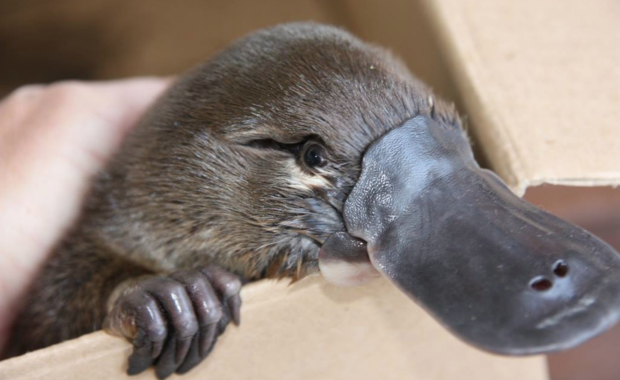Platypuses at risk of extinction
Australia's severe drought and other climate change effects are driving the native platypus towards extinction, researchers warn. With rivers drying up, many platypuses are becoming stranded and a new study led by University of New South Wales (UNSW) Sydney's Centre for Ecosystem Science has examined the risks of extinction for the unique mammal.
Although there is little known about the distribution of platypuses because of their nocturnal nature, the study determined there is "an urgent need for a national risk assessment" for the platypus. The study examined the threats that could damage platypus populations, such as climate change, severe periods of drought, water resource development and land clearing.

Climate change and long droughts are among the risk factors threatening platypuses. Facebook/NSW National Parks and Wildlife Service
Due to current climate conditions, land clearing and fragmentation by dams, the number of platypuses in the world have decreased by about half, which has led to the extinction of local populations across about 40 per cent of the species' range.
The expected losses are even greater, because of extreme droughts like the one that is currently plaguing Australia.
The International Union for Conservation of Nature (IUCN) recently downgraded the platypus' conservation status to "near threatened," but the study's lead author Dr. Gilad Bino said that action must be taken now to prevent total extinction. "These dangers further expose the platypus to even worse local extinctions with no capacity to repopulate areas," he said.
Professor Brendan Wintle from the University of Melbourne, who co-authored the study, echoed this sentiment. "Even for a presumed 'safe' species such as the platypus, mitigating or even stopping threats, such as new dams, is likely to be more effective than waiting for the risk of extinction to increase and possible failure," Wintle said.

An Australian platypus swims around in search for food at Taronga Soo in Sydney, Australia, May 8, 2008. Rob Griffith / AP
"We should learn from the peril facing the koala to understand what happens when we ignore the warning signs," he added.
Dr. Bino said their study added to the body of evidence that the platypus is on the path to extinction, much like many other Australia species. The research team will continue to study the ecology and conservation of what they called the "enigmatic animal."
Platypuses are "secretive and nocturnal," according to the study, and they are unlisted in most areas of Australia — except for South Australia, where they are endangered, according to UNSW.
Because platypuses lived in areas undergoing extensive human development, their long-term viability was compromised, Professor Richard Kingsford, director of the UNSW Centre for Ecosystem Science and study co-author, said.
Climate change and extreme drought have affected more than just platypuses in Australia. The country has been experiencing devastating wildfires, which stem from a typical weather pattern that has been intensified by climate change.
"We're in a three-year drought in Australia," CBS News meteorologist and climate specialist Jeff Berardelli said on "CBS This Morning" earlier this month.
Just a couple of weeks ago, Australia hit 107 F for the average temperature, breaking a past record by three degrees. "As a meteorologist, that is remarkable, almost seems like it's not possible, but it happened," Berardelli said.
The drought is due in part to a typical weather pattern called the Indian Ocean Dipole and that extreme pattern has been made worse by warming temperatures, according to a study published in the journal Nature.
Michelle Carter's texts with Conrad Roy
Average kid's allowance is almost $500 a year
Thousands of activists rally for gun rights in Richmond, Virginia
